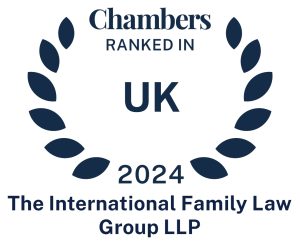When the Family Procedure Rules 2010 (FPR) originally came into force in April 2011, rule 8.26 provided that applications for leave under Part III must be heard by ‘a judge, but not a district judge’. Rule 8.28 of the original rules went on to provide that if the leave application was granted, the court may direct that the application be heard by a district judge of the Principal Registry of the Family Division (PRFD). In practice this meant that leave applications were heard at circuit judge leave or more commonly high court judge level. If leave was granted it was often retained at that senior level, although there was discretion for the substantive proceedings to be heard by a district judge within the PRFD.
In April 2014, the Family Court (Composition and Distribution of Business) Rules came into effect. Schedule 1 to those rules contained a table recording to which level of judge various applications should be allocated. It provided that applications under Part III shall be heard by a district judge where the parties consented to permission being granted and to the substantive order, otherwise they should be allocated to a High Court judge. The 2014 Rules did however go on to provide that the allocation principles are ‘subject to the need to take into account the need to make the most effective and efficient use of local judicial resources and the resources of the High Court bench that is appropriate given the nature and type of the application’.
For just over three years there therefore existed an inconsistency between the FPR 2010 and the 2014 allocation Rules until the FPR was amended in August 2017. The amendment – at rule 8.23 – clarified that Part III allocation should be dealt with under the Family Court (Composition and Distribution of Business) Rules 2014.
In the meantime, in July 2014 Holman J heard the case of Barnett [2014] EWHC 2648 (Fam). The Applicant’s solicitors had headed the name of the court in which the application was issued as the Principal Registry of the Family Division although it came before Holman J sitting in the High Court. As part of the draft documentation prepared the Applicant’s solicitors had envisaged that the substantive application may be issued in the Stoke-on-Trent County Court. Holman J reviewed the allocation rules and took the view that in the circumstances of the case it would be appropriate for Part III proceedings to allocated to the local family court sitting in Stoke. He said as follows (para 21):
“But, speaking for myself, I cannot see any reason why, in routine applications for leave under section 13 of Part III of the Act, applicants or their solicitors, such as the solicitors in the present case, cannot apply first to the family court sitting at some convenient and appropriate local venue for a district judge of the family court at that venue to make a decision as to whether or not the requirement to make the application for leave to a High Court judge (generally here in London) is displaced by application of rule 15(2)”.
That was followed on 28 February 2018 by guidance from the office of The President on the allocation of cases within the Family Court which stated (at para 25) that:
“Unless such a [Part III] case has some special feature, or complexity, or very substantial assets, it should be allocated to a district judge for the permission decision, as well as substantively”.
A further inconsistency therefore existed between (a) the 2014 allocation rules and (b) the guidance given by Holman J in July 2014 and The President in February 2018. This inconsistency will however be removed from 24 May 2021 when The Composition and Distribution of Business Rules 2014 shall be amended to provide that all Part III cases – whether for permission or substantively and whether by consent or not – shall be allocated at district judge level unless there is some special feature, complexity, or very substantial assets.
It can therefore be seen that there has been a gradual but significant shift over the last decade in the allocation of Part III cases. We have gone from such cases being specifically kept away from district judge level owing to the distinctive features of such cases to district judge level becoming the norm within the space of 10 years.
The justification given by Holman J – an exceptionally experienced judge sitting within the family division of the High Court who first proposed these amendments – was that jurisdiction under Part III was now “long established” and no longer novel. He also commented that most Part III cases are “no more complicated than financial remedy cases routinely heard by district judges in local courts” and that there was “no justification or need for these cases to come anywhere near a High Court judge” unless there is some special feature, complexity, or very substantial assets.
The changes to allocation over the last several years undoubtedly reflect the fact Part III proceedings have become much more common. It no doubt also reflects the huge pressures on the list of High Court judges and the creation of specialist financial remedy courts a few years ago. The changes to allocation do however amount to a significant change in the level of judge hearing these cases which could have a significant impact going forwards.
Although Part III cases have many similarities to financial provision on domestic divorce, there are some significant distinguishing features. First, under Part III the court is not starting from a blank sheet but instead has to weigh up what weight to give to the strength of the parties’ connections with England. This exercise is not undertaken in a financial remedy case on an English divorce and care needs to be taken to ensure it is not assumed that Part III cases should be approached in an identical manner as a domestic case regardless of the circumstances.
Second, and perhaps more importantly, the court also has to determine what weight to give to the decision reached by the overseas court. English judges need to be mindful that many specialist family lawyers and judges abroad perceive our Part III powers as controversial and akin to acting as an appeal court in respect of their decisions. This takes on additional importance, the higher the level of court abroad. Would it, for example, be appropriate for a local district judge to in effect overturn a decision of the overseas equivalent of our Supreme Court as I know has happened and our appeal suggesting Part III from a foreign Supreme Court decision should be dealt with at higher than district judge level was unsuccessful.
Whilst it is appreciated that the creation of specialist financial remedy centres has improved the efficiency of financial remedy cases, the burden on judges sitting at High Court level needs to be taken into account and Part III cases have become more common in recent years. It also needs to be remembered that Part III cases have several distinctive features. An example of the difficulties which can arise with Part III cases can be found in the case of Potanin [2019] EWHC 2956 (Fam). In that case Cohen J – also an exceptionally experienced High Court judge – set aside a grant of leave on the basis there had been misrepresentation as to inter alia the law on Part III.
I have written separately here on whether the Part III leave procedure should be reformed; if such errors as took place in Potanin can occur in cases with such specialist lawyers and judges involved, there must surely be a greater risk of worse occurring if cases are routinely allocated to other than specialist members of the judiciary. Might there be a benefit in especially ticketed Part III district judges or does this fly in the face of the expectation that these cases can be dealt with at district judge level? Certainly, they must be dealt with in the financial remedies court.
So, whilst the changes to allocation rules over the last several years are undoubtedly appropriate for many cases, an element of caution is still urged. It is appreciated that the allocation rules and other guidance provide for appropriate cases to be heard at high court judge level, but careful gatekeeping is required to ensure that such cases are allocated appropriately. Perhaps as part of that allocation process the seniority of the overseas tribunal should specifically be taken into account given issues of international comity and the difficult balancing act between respecting decisions of overseas courts on the one hand whilst also protecting the interests of those with close links to England who have received inadequate financial provision abroad.
Michael Allum
[email protected]
The International Family Law Group LLP
www.iflg.uk.com
© May 2021
-
Michael Allumhttps://iflg.uk.com/team/michael-allum
-
Michael Allumhttps://iflg.uk.com/team/michael-allum
-
Michael Allumhttps://iflg.uk.com/team/michael-allum
-
Michael Allumhttps://iflg.uk.com/team/michael-allum









